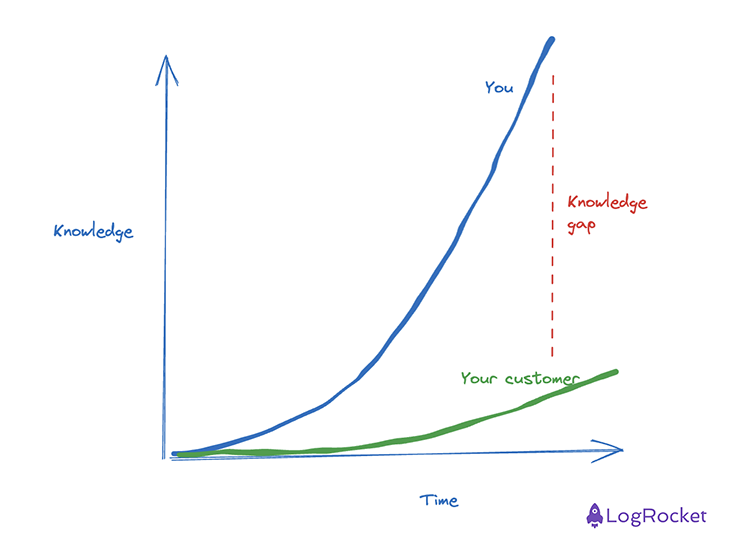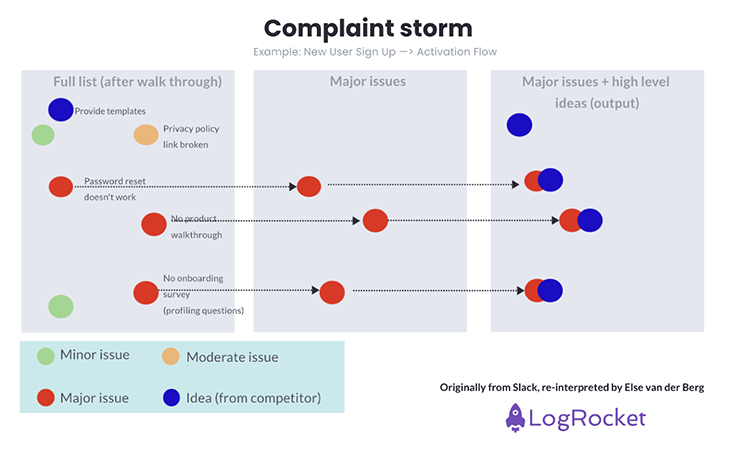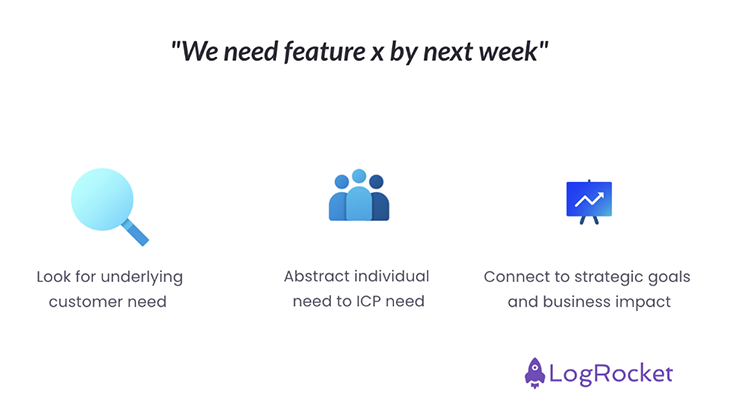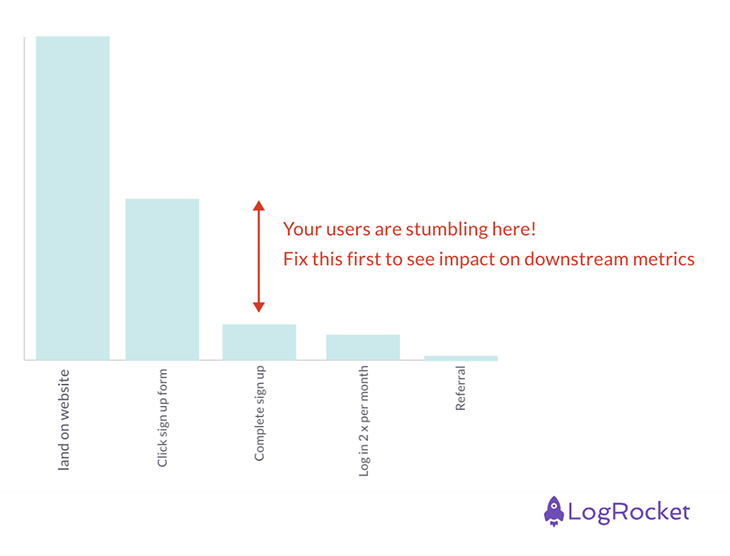Creating customer value is all the rage in the product world, and rightly so. We’re all trying to move away from stakeholder-driven prioritization toward a product-led and customer-centric way of building software.

But delivering features that move the needle for your target customer is hard, and figuring out where to start can be even harder. I recommend starting with the low-hanging fruit — changes that will almost surely have a positive impact on customer experience, and that aren’t too complex or costly to implement.
But how can we find low-hanging fruit? In this article, I’ll outline three techniques I use to generate a wealth of ideas to find low-hanging fruit, as well as a quick way to assess whether they are the quick wins you’re looking for.
Aligning with ICE, one of the most popular frameworks for feature prioritization, low-hanging fruit is ideas that are likely to have a strong positive impact on the customer experience and are of relatively low effort, and where both these parameters are backed up by sufficient proof to bolster confidence.
Now that we’re familiar with what we want our outcome to be, I’ll explain three ways to generate ideas
The easiest way to get close to your user is to become a user. And if Microsoft, Apple, and Google are doing it, it probably isn’t a bad idea. It’s ideal if you’re building something you can actually use in your day-to-day operations, like a CRM, analytics, or internal communication tool.
Even if that’s not the case, you can make a habit of going through your end-to-end customer journey regularly. Google your problem, check out your website, hit that sign-up button, and go through the motions.
But there’s an important caveat. It’s very difficult to critically assess something you’ve created yourself and are working on every day. The curse of knowledge is very real, and unavoidable:

This doesn’t mean you should stop, it just means you should add additional measures on top. For example, ask new joiners to do the same as part of their employee onboarding. They still have that fresh set of eyes you’re looking for. Look over their shoulders as they go through the new user experience (NUX) and ask them to narrate their thoughts.
Watching session replays of real users using your product is great. With a bit of luck, you’ll get to big data sets, and these users are likely to be part of your target audience. However, the big benefit of watching your new colleagues use your product is that you can ask them to narrate their thoughts and prod deeper into the “why” behind their choices.
I first stumbled over Slack’s complaint storm in a 2019 tweet thread by Noah Desai Weiss (CPO of Slack). I’ve used it many times since then to identify weak spots in particular parts of the product I’m working on like the website, the sign-up flow, or achieving specific user goals, such as taking the necessary actions to achieve an aha moment.
Noah describes the complaint storm as “an excruciatingly detailed product walk-through with the eyes of a borderline indifferent new customer, combined with a brainstorm of potential problems worth fixing.” Simply put: gorging on your own dog food.
The exercise should be executed with the entire (extended) leadership team. In my interpretation, the emphasis is on identifying and triaging problems, for example by tagging them as “minor,” “moderate,” or “major.” It’s not about brainstorming solutions, although it’s fine to note down some obvious potential solutions as you go through.
To get into the swing of things, start by critically assessing the user experience of your competitors, meticulously documenting friction points, dead ends, confusing elements, or good ideas in each step. Collect your ideas and screenshots in a simple collaborative document, like a Google Doc.
Now it’s time to assess your own product through the eyes of “a borderline indifferent new customer.” Be prepared, this might hurt a bit.
A complaint storm done right results in a vast amount of identified issues and ideas, triaged by importance for the user experience.
After completing the walkthrough, go through the major problems to brainstorm potential solution ideas. These ideas should be simple and described in a maximum of three sentences.
Make sure not to go too deep down the solution rabbit hole just yet. This rabbit hole is reserved for the best ideas only:

You’re likely sitting right next to the people who know your customers and prospects the best: your colleagues from customer success and sales.
I’ve never met a product manager who loves getting random feature requests getting tossed over the fence while grabbing a cup of coffee — “We need an integration with [insert tool with little market penetration] by tomorrow!”
By setting up a simple, lightweight process for idea submission, you can reduce your mental load and make sure you’re capturing the key information:
You can ask your colleagues to submit ideas via email, via a survey, or directly on a Kanban board, as long as the tool you pick is easy to use for them.
Be appreciative of the wealth of knowledge that your CS and sales colleagues can bring and use it to your product’s advantage. At the same time, don’t jump when a customer or prospect tells you to.
It’s the job of the product manager to

A smart product manager doesn’t just wait for CS and sales colleagues to toss over the nuggets they consider interesting, but proactively involves these forward-facing colleagues in the discovery and validation processes.
Your CS and sales colleagues are in a perfect position to gather answers to your burning product questions. What job are your customers getting done with your product? What challenges do they face? What’s enabling or blocking their progress? If you need inspiration for good customer discovery questions, feel free to dive into my interview template.
Set up a central spot where your colleagues can easily input their results, such as a Google Sheet, an Airtable Database, or via email.
Also, I’m very much inspired by the outcome-driven innovation and Jobs-to-be-Done frameworks, which focus on the customer’s job rather than your solution. The key is to compile a complete job map and identify unmet customer outcomes or needs for each of these steps. Other than a customer journey map, the job map puts your customer’s steps for completing a job at the center, not your solution.
But in reality, I’ve struggled to get customers to walk me through their entire job map from start to finish, pointing out friction points along the way. It’s a tall order.
Joseph Boston, product director at Eat App, gave me the great advice of relying on CS and sales agents for a solid first draft for your job map. They’ll also have a good feel for which steps are causing the most unresolved pain.
Another method to finding low-hanging fruit is to dig into the data that’ll show you where customer success gaps lie. The best way to do this is by using AARRR metrics.
AARRR metrics, also known as pirate metrics, were introduced by Dave McClure, a Silicon Valley investor and founder of 500 Startups. By measuring how many users or accounts reach the stages of acquisition, activation, retention, revenue, and referral, you can see which of these stages is seeing the biggest drop-off. This is most likely the lever you want to focus on first.
If you’re in a B2B space, I would recommend measuring both on the user and account/company levels.
How to define the AARRR letters very much depends on your business model and product, but below is an example:
| Stage | Question | Success metric |
| Acquisition | Where are customers coming from? |
|
| Activation | How to turn acquired customers into active customers |
|
| Retention | How to make potential customers come back |
|
| Referral | How to get customers to recommend your service |
|
| Revenue | How to turn potential customers into paying customers |
|
For example, let’s say we detected an unexpectedly big drop-off between starting and completing the signup. Addressing this success gap, a step where users are clearly stumbling, will have a big impact on metrics further downstream and therefore likely result in an uptake in business metrics, such as revenue:

The next step is to uncover what is happening and why. The “what” can be uncovered by zooming in on your success gap, in this case, the sign-up flow, by precisely mapping out every step from start to finish. With this information, you can build a detailed onboarding funnel. The “why” can be uncovered through qualitative methods such as usability testing and customer interviews.
As mentioned above, I use ICE as a prioritization method, scoring ideas on Impact, Confidence, and Effort. I define low-hanging fruits of opportunities for which there’s a high level of confidence that they will have a relatively large impact with little effort.
But of course, no matter how much evidence you collect upfront, you can never be sure that what you consider a low-hanging fruit is indeed having the effect you thought it would. A report from 2019 showed that a whopping 80 percent of features end up being never or hardly used. Never forget to measure feature adoption, so that you can learn and iterate on what is truly valuable to your target customer.
Featured image source: IconScout

LogRocket identifies friction points in the user experience so you can make informed decisions about product and design changes that must happen to hit your goals.
With LogRocket, you can understand the scope of the issues affecting your product and prioritize the changes that need to be made. LogRocket simplifies workflows by allowing Engineering, Product, UX, and Design teams to work from the same data as you, eliminating any confusion about what needs to be done.
Get your teams on the same page — try LogRocket today.

A practical framework for PMs to use AI in ideation without sacrificing judgment, strategy, or decision quality.

A practical five minute revenue estimation method to help product managers compare ideas, drop low impact features, and prioritize smarter.

A practical guide for PMs who want to stop being bottlenecks, delegate smarter, and lead teams effectively with a clear ownership framework.

Stop letting unreliable data block features. Treat data as inventory to track quality, ownership, and ship with confidence.